Copyright 2020 - 2021 irantour.tours all right reserved
Designed by Behsazanhost
Iran's desert a Charming rough
Iran's desert a Charming rough, where amaze all visitors
When thinking of a natural destination, usually the images of rainforests, lakes, and waterfalls come to mind. Maybe fewer people pay attention to the desert areas and think about their beauties. But the fact is that Iran, with the forest, sea, waterfalls, and thousands of other natural attractions, also has magnificent deserts. These homogeneous areas of the earth have a strange silence and tranquility. The warm, sandy breezes make walking a pleasure and a memorable experience for everyone.
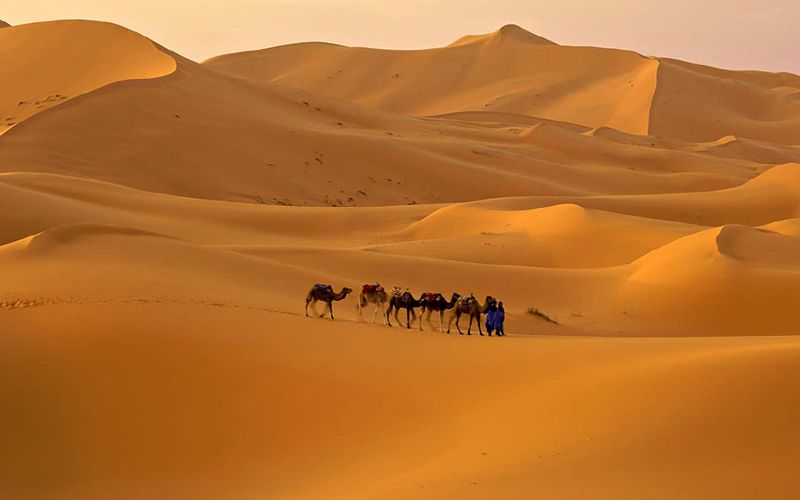 |
Pack your bags and join us for a trip to the desert regions in the center of Iran that are hot, dry, mysterious, and attractive. known locally as Desert.
There are several reasons that encourage you to visit the deserts of Iran at least once in your life. The beauties of the deserts such as the supernatural sunset and sunrise, the mysterious silence of the desert, the hills of sand, the salt crystals and the fantasy cities on the one hand, and the specific and diverse characteristics of the Iranian deserts such as the giant Kaluts, on the other hand, have made Iran one of the best desert adventure destinations these days. Iran is one of the few remaining destinations where there is always the freedom to travel in time, timeless and by choice, to sleep in an isolated desert or a formal camp, to explore the central desert and the distant dunes, to live a great adventure.
Iran is a country of endless contrast where you can discover fascinating facts about plants, animals, geology, history, culture, and lifestyle of the desert with exhibits and interactive exhibits to bring life to life to your visit. One of the vast and incredible deserts of the world travel by 4x4 off-road vehicles through remote regions where the beauty and serenity of the desert come to life. Come and enjoy the spectacular beauty of the central desert of Iran.
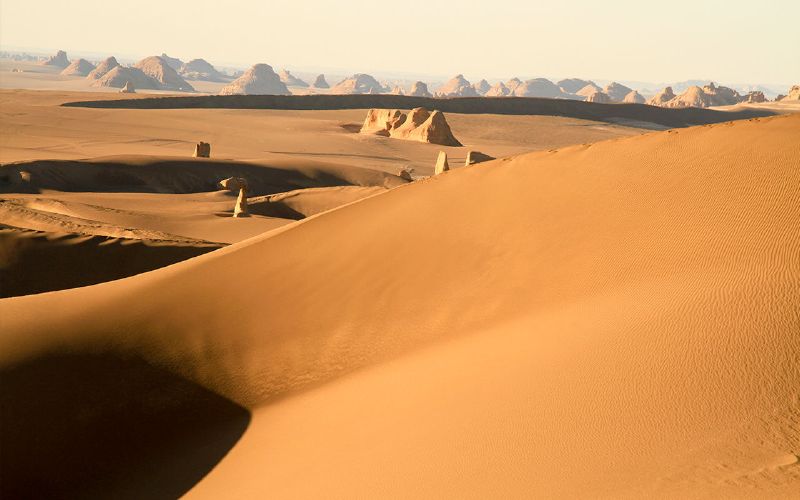 |
Let our local guide introduce you to the wonders of the flora and fauna of the desert and give you a real appreciation for the delicate balance of life in the desert ecosystem. Imagine a hike on hills of sand and a crossing of the desert as in the past where you will find a natural spring gushing from the side of the heart of a dune. Iran's desert tours have their own followers, we invite you to join one of Iran's adventure tours and find out why. Passing through Kavir National Park (Desert National Park) reveals the hidden and mystery of Iran's beautiful desert, and also expands your experience beyond normal life.
Explore the high-walled sand dunes and walk for miles. Kavir National Park is really perfect adventure tour for travelers looking for safari-style wildlife. Kavir National Park is known as Little Africa or the Iranian Serengeti (a geographic region in Africa) because of its amazing biological diversity in wildlife and it is considered one of the dazzling regions of the country. Kavir National Park is the largest protected ecological area in Iran and is located at the western end of the Dasht-e Kavir with a total area of 670,000 hectares which spanned the provinces of Semnan, Tehran, Qom, and Isfahan.
Kavir National Park has a dry, desert climate and most of its precipitation occurs from November to May. The average annual precipitation in the region is around 150 mm. However, the desert has several rivers and springs, including Sefid Ab, Abshar Namaki, and Siyah Kuh. Generally, hot weather continues from early June to late October in the region.
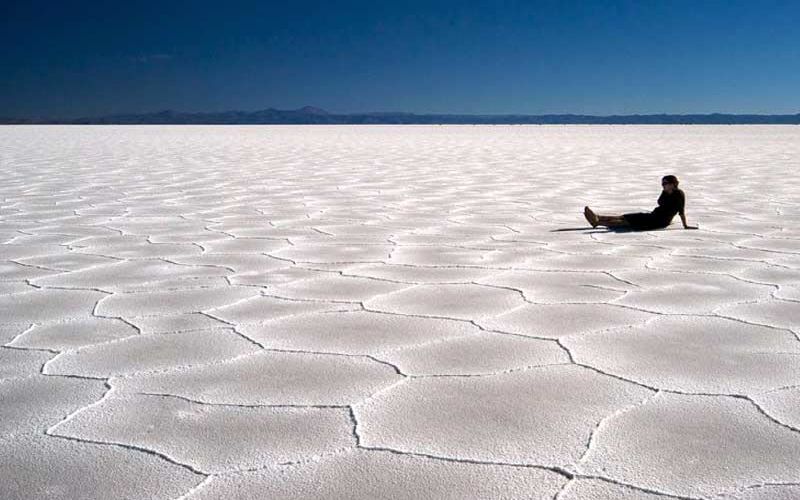 |
Kavir National Park in the vicinity of Tehran
Salt Lake is one of the attractions of Kavir National Park, which is one of the country's largest triangular-shaped salt marshes, located close to the region, outside the park border. There is a lot of quicksand around this vast salt marsh and no creature lives inside, although it does have a large number of migratory birds during the winter.
Kavir National Park is the only area in Iran that there are no humans living there and well protected from human impact on its environment. In fact, the park is a natural exhibition to showcase the wilderness of the desert, including the Asian cheetah, the Persian leopard, the gray wolf, the striped hyena, the sand cat, the red fox, the Rüppell fox, Chinkara, Ovis, Jackal, Caracal and various halophytic plants. A total of 34 species of mammals, 155 birds, and 34 reptiles have been identified in this region.
Tourist attractions
The Kavir National Park has the highest tourism potentials to attract the traveler. The vicinity of the park to Tehran(less than 30 min), Very diverse sections, the great diversity of animals and ... have led many tourists to travel the region each year.
Stony Road or Paved Road
The paved road is one of the most amazing hand-made structures(Safavid era) in the region, allowing the caravans through the swampy lands of Dasht-e Kavir. The famous Bahram Palace, which is, in fact, a Shah Abbasi Caravanserai, on the way of Silk Road and Ain Rashid Caravanserai, the rock channel of Sieh Kooh which supplies the necessary water to the Bahram Palace, the remains of the "harem building", the "Sefid Ab "and" The Lakab caravansaries and the "Qilooqa" water reservoir are other historic attractions in the region.
The best time to go?
Kavir National Park is home to many tourists and wildlife lovers who pack their bags to see this spectacular region every year. Mid-autumn and late November are the best times due to the dryness of the road and the mild weather in the region. The necessary equipment to bring along the trip includes first aid kit, spare tire, additional fuel, hats, sunglasses, sunscreen and plenty of water. If you want to take a personal trip to the park, use an off-road vehicle. Otherwise, it is best to get there on tours.
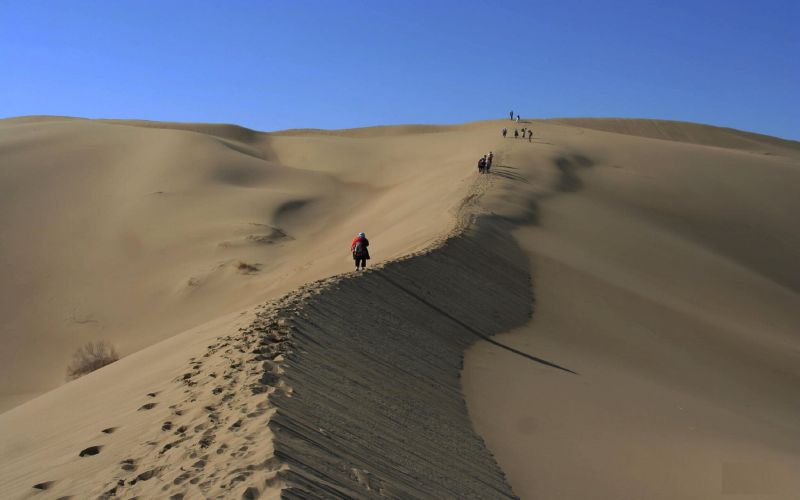 |
Isfahan's Desert
if you are going to go to Isfahan for visiting the historical sites of this beautiful city you would have the best opportunity to visit the Varzane or Kara desert close to Isfahan. Varzane Desert (the correct word Khara desert) is located in Isfahan province, about 100 km of Isfahan and 150 km of Yazd. Here is one of the most beautiful deserts in Iran to enjoy the glory of the night with millions of stars in the sky of the desert and visit historical fantastic places in the village during the day. This desert region not only has the natural attractions of a desert but also introduces you to the human characteristics of the area. After visiting the natural desert attractions, you can immerse yourself in the area's anthropology and culture museum and enjoy its social specifications.
Gav Chah
You can see one of the most simple, traditional, and initial ways of getting water from a well. It works with a huge cow who moves and pulls the windlass, but he never starts moving unless the old man(owner) sings a song.
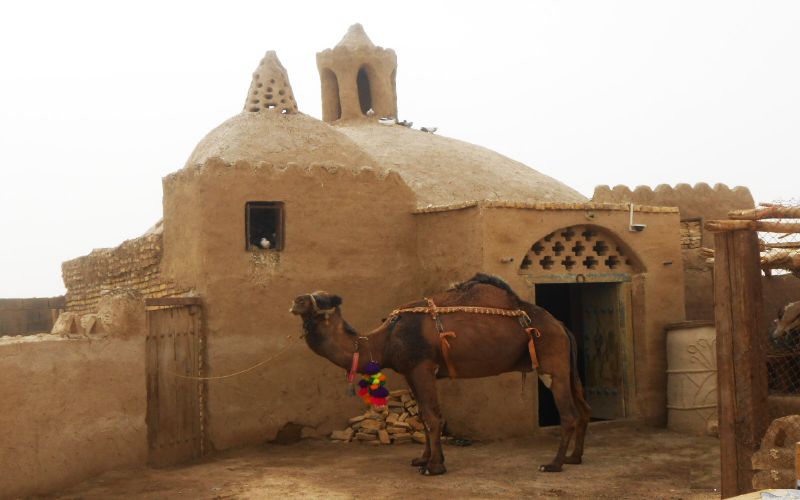 |
Asorab (flour mill) shotor
Here's a place to grinding wheat. In this way, we have a camel that walks slowly and drags the grinder, and produces the flour.
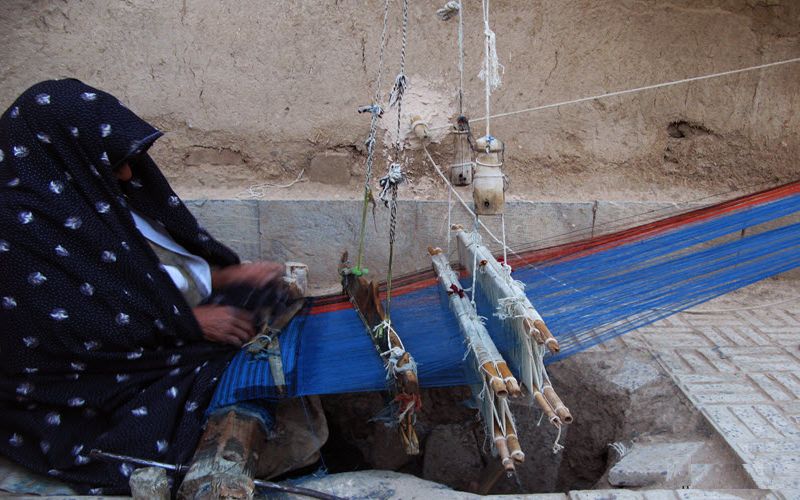 |
Karbafy workshop
Handicrafts are one of the most important sources of income for rural women and also the most important element for recognizing indigenous peoples' culture.
Karbafy is a traditional textile industry, which is common in Varzane and around. This handmade gets woven by women in various designs and colors. In Varzane you can find strips and blue.
 |
Ghurtan Citadel
The ancient Ghurtan citadel is located 12 km west of Varzaneh. It is located on the bank of the Zayanderud river and has survived natural disasters and many wars for 1000 years. Having very thick mud-brick walls) made it a protected complex for the inhabitants of the region. The thickness of the walls varies from 3 to 4 m and their height is around 9 m. The citadel has an area of 40,000 square meters. Today, only four families live inside. The citadel contains four mosques, a dovecote tower, a water tank, a mill, and many houses. It is protected by fourteen round towers and you enter through two walkways.
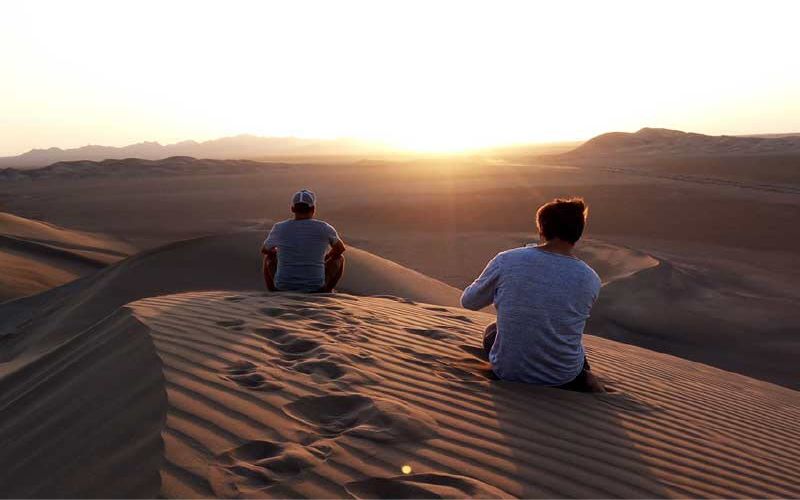 |
Sand dune and Sand Hills
Sand dunes usually do not move around considerably, that is, you can camp there for several nights with easy access to the city. However, please note that, with the exception of late spring and summer, the temperature often drops below 10 ° C and 10 degrees below freezing in January and February), due to the lack of 'humidity. So, you would need sleeping bags if you want to camp there. The desert is approximately 45 km long.
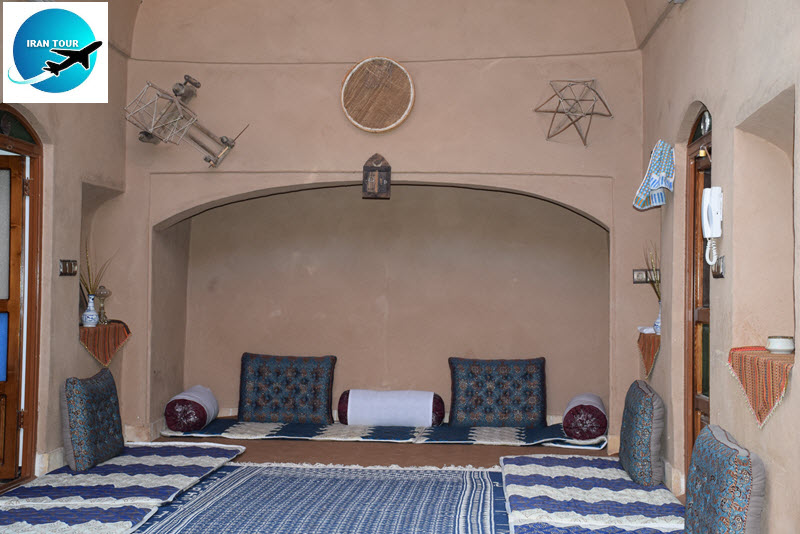 |
Accommodation in Varzane
You never worry about accommodation in Iran, Iranian are known as the world's most hospitable people, thus you can find a safe place overnight.
In Varzaneh, you can stay in traditional guesthouses. There are many guest houses in Varzaneh which have comfortable rooms, accommodation facilities, and delicious traditional dishes.
What is the best time to go?
Whole the spring, October, November, and December are the best time to visit there.
Getting there?
From Isfahan, travelers can go to Jey terminal and take Varzaneh buses and minibusses, paying about USD 1. You do not need to book your tickets in advance. You can go directly to the Jey terminal and ask the terminal staff where the bus (or minibus) is located. Almost once an hour, from 7:00 a.m. to 5:00 p.m., there is a bus to Varzaneh. It takes 1.5 hours to get there. Many taxis are also available, usually in front of the terminal to reach Varzaneh. You would pay around 10-15 USD to get there by taxi.
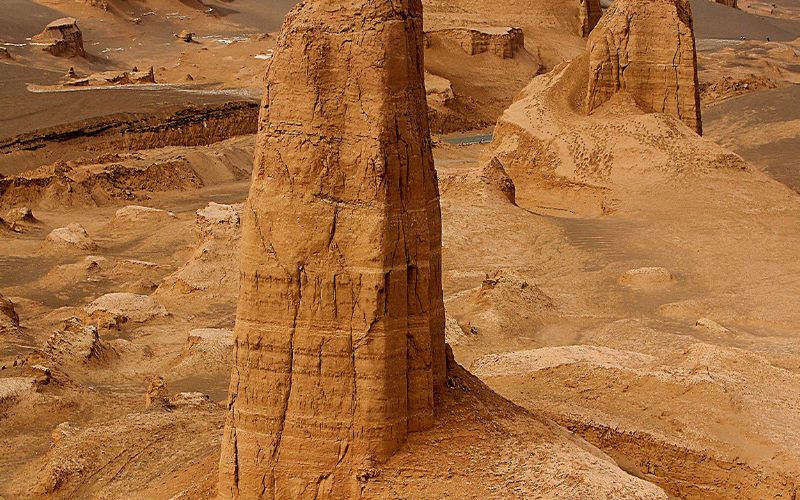 |
Lout Desert
25% of Iran's land is covered by different deserts and among them, the Dasht-e Lut with an area of over 40,000 square kilometers, is one the most famous deserts of Iran. This vast desert which is known to Lut Desert, or Dasht-e-Lut, is laid in the southeast of Iran between the provinces of South Khorasan, Sistan and Baluchestan, and Kerman. It is an arid continental subtropical area, notable for a great variety of spectacular desert landforms.
The Lut Desert is the world's 27th-largest desert, inscribed on UNESCO's World Heritage List. The catchment area of Dasht-e-Lut is extended about 175,000 square kilometers, which is about 10 percent of Iran's land. In the Persian language, ‘Lut’ refers to bare land without water and devoid of vegetation. The Lut desert is divided into three geographical reliefs: the north of Lut, made up of elements of gravel and sand; Central Lut, as the most amazing part with very amazing phenomena in the world like Kaluts (natural ridges in various forms result from the mechanisms of water, wind, and erosion), as well as the masses and immense sand dunes; South Lut with the richest vegetation.
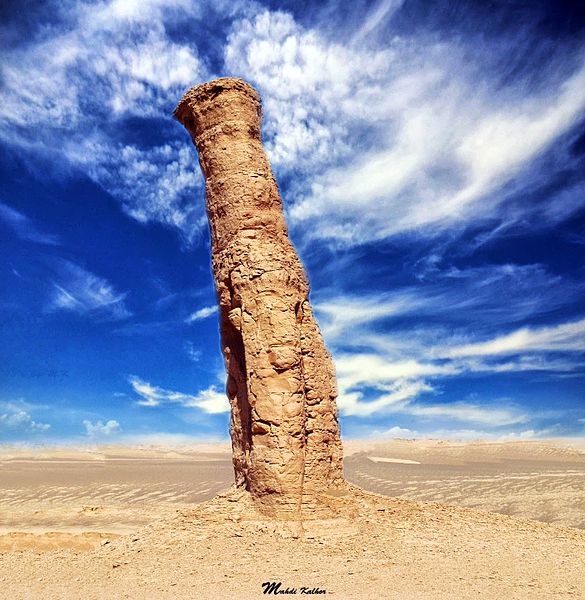 |
Kalut
The Kaluts or Yardangs are known as a unique natural phenomenon in the Lut Desert. The Shahdad region, with its unbelievably beautiful Kalouts, is the only UNESCO World Natural Heritage Site in Iran. The Kalout is the masterpiece of water - wind and nature engineering that has created the most beautiful natural sculptures.
The Kalouts is the masterpiece of water-wind and nature engineering that have created the most beautiful natural sculptures and among these natural artists, the 120-day wind from the Sistan has the most important role. The same wind that has been propelling Nashtifan's windmills for hundreds of years.
Due to the appearance of the region, the Kaluts is known as the largest Cloddish city in the world. Due to the shape of Kaluts, this landscape is named the imaginary city.
 |
Sand dunes
The Sand dunes are situated in the south of central Lut. The height of these sand dunes is up to 480 meters. To reach the dunes, you'll need to do a tour with a 4WD and experienced guide
Nabkha
Nabkha is an amazing natural phenomenon in the Dasht-e Lut. There is a type of Tamarisk tree 20 kilometers from the Shahdad region, which is located in the desert pots. Nabkha is the result of the interaction of wind erosion, the humidity of the region, and the plant cover, so the existence of a plant in the path of the airflow, causes the sand to accumulate at the bottom of the plant and, therefore, sand dunes will be created with a crown of vegetation and will sometimes reach 10 meters long, while the height of the highest Nabkha of the African desert reaches barely three meters.
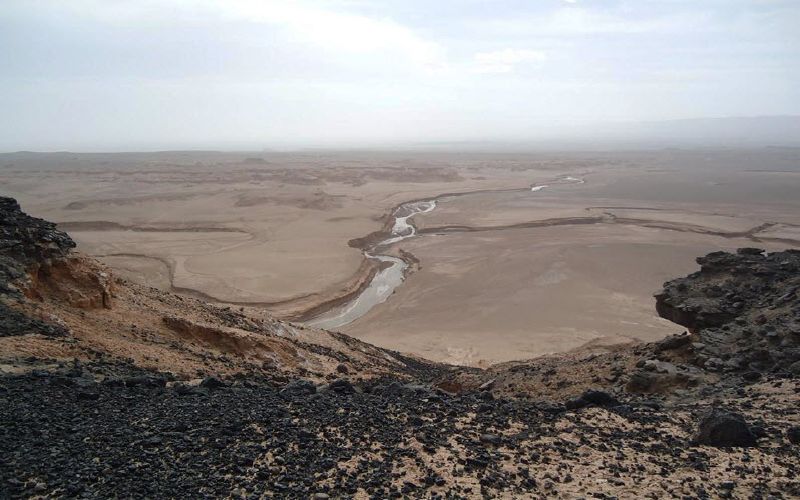 |
Kalshour River
The Kalshour river or Shor river (salt river) is the only permanent river in the heart of the Lut desert, which is full of water during the year. The Kalshour River is another landmark of the Lut Desert in Kerman Province.
 |
Shafiabad village
You can visit the villages of this area to get acquainted with the culture of the desert region. These villages, like an anthropological museum, will familiarize you with the rich culture and customs of the area. Shafi Abad Village is one of those villages that attract all visitors with its beautiful 200-year-old castle and hospitable people.
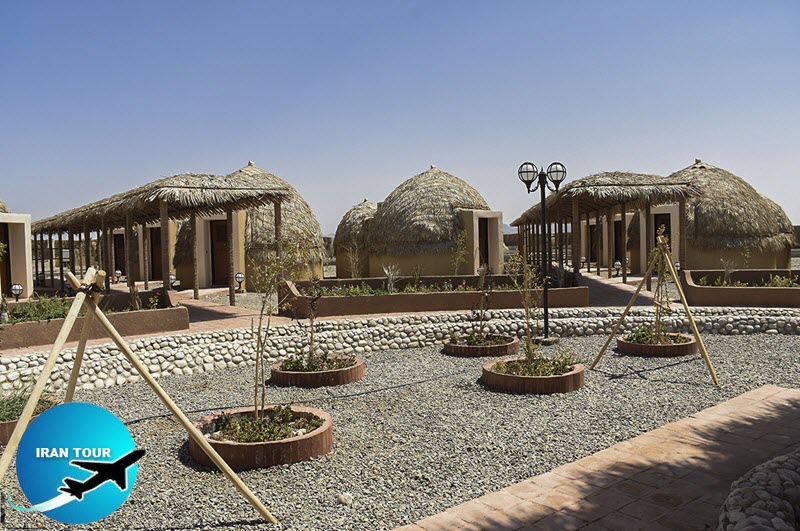 |
Where to Stay?
If you intend to travel to the Lout Desert, you can accommodate in the Kalut Local House, Kavir Ecolodge, and Vakilabadi traditional house. Otherwise, you can go to the Shahdad Desert Camp, located 10 kilometers from the Shafiabad village, to cast up your tent along the flat spot provided there and sleep under clear skies crowded with stars.
What is the best time to go?
The best time to have an extraordinary journey to the Lut Desert is in Spring (between April to May) and Autumn. To benefit from the picturesque landscape of Kaluts and marvel at its magnificent beauty, we highly recommend you to get there at the beginning of the day or sunset.
Getting there?
The Kalouts of Shahdad have located approximately 220 kilometers away from Kerman city, and it takes approximately three hours via the Nehbandan - Shahdad road. You can organize your excursion trip from Kerman to this beautiful region through local tour operators or organize it through other travel agencies. Although this area is safe, it's necessary to travel with an experienced guide. You should know, on the way to Kaluts, there is no restaurant and shop unless you stop in Shahdad. This trip through the Lut Desert will be one of the best culture and adventure tours.
- Details
- Category: What to see in IRAN






























